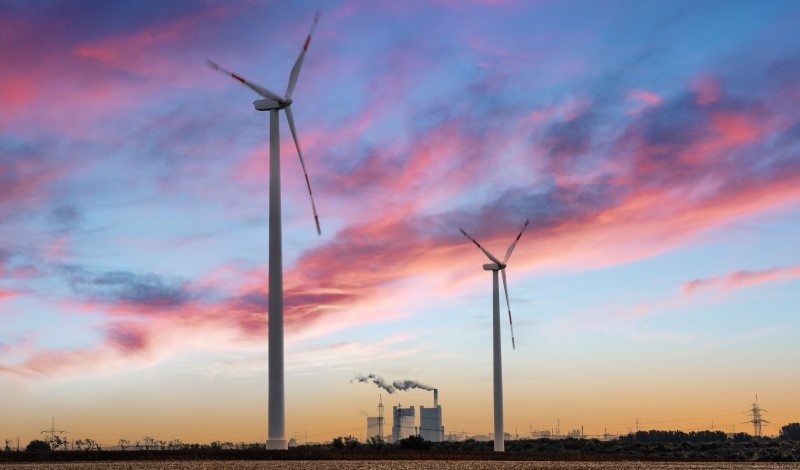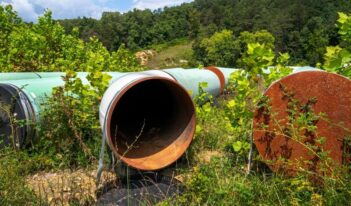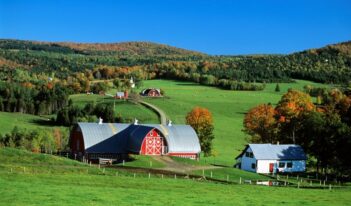
Efforts to triple renewable energy capacity may face resistance from citizens in rural areas.
Twenty-four percent of U.S. counties have enacted ordinances restricting renewable energy facilities. Rural opposition to renewable siting has emerged in Canada, Denmark, Germany, Greece, India, South Africa, South Korea, and the United Kingdom. It is not clear if this scale of political backlash against renewables was factored into recent United Nations Climate Change Conference (COP) 28 conversations as it reached an agreement to transition away from fossil fuels. But rural opposition is real and needs to be taken into account in charting a path forward toward a net-zero economy.
For climate optimists, COP 28 was historic because, for the first time, oil and gas were mentioned in a COP declaration. For pessimists, however, instead of calling for phasing out fossil fuels, COP 28 called for tripling renewable energy capacity by 2030.
The renewable target is not mandatory because each country will decide whether and how to implement it. Although the cost of solar and wind energy has dramatically fallen in the last ten years and they are cost-competitive with fossil fuels in many countries for electricity generation, renewable energy faces many challenges. These include issues such as grid connectivity, delays in permitting for constructing new transmission lines, high interest rates that are causing problems for capital-intensive projects such as offshore wind, a shortage of electricians and trained workers, and bottlenecks in critical minerals supply chains.
Some countries face another challenge: local opposition to the siting of renewable energy facilities. These facilities need to be constructed in specific locations only. Wind farms—whether onshore or offshore—require areas with strong wind flows, and utility-scale solar facilities need areas with plentiful sunshine.
Moreover, these facilities tend to require large land areas compared to fossil fuel-based facilities. This means that they tend to get sited in areas where land is cheap and plentiful, namely, in rural areas.
These location requirements create political problems if local people do not like having these facilities in their neighborhoods. The reason is that the costs of these facilities are local, but benefits flow outside their local areas. Renewable facilities in rural areas generate electricity which is consumed predominantly in urban areas.
Washington State Representative Mark Klicker (R-Walla Walla) has noted that “Eastern Washington communities are burdened with generating renewable energy, while more populated areas west of the Cascades use most of that energy.”
These renewable energy facilities, however, generate clean electricity and reduce greenhouse gas emissions, which is a global public good that benefits everyone. Still, the local economic benefits during the construction phase tend to be small. In any case, once the facility is up and running, few people are required to keep it working, so these projects do not generate a lot of new jobs in the areas in which they are located.
Not surprisingly, local communities perceive that they are burdened with the costs of hosting such facilities, in particular, through the disruption of the rural landscape. These facilities spoil rural aesthetics and reduce property values. When rural residents protest, their local governments come under pressure to enact laws or ordinances to restrict renewable energy facilities. Thus, the rural opposition could be viewed akin to the NIMBY, not-in-my-backyard, politics.
In a recent paper, we examined the emergence of restrictive land use ordinances aimed at wind and solar energy facilities across U.S. counties. These restrictions sometimes ban or impose a moratorium on new facilities, establish setback requirements from certain man-made or natural objects, noise thresholds, and/or impose size restrictions on generation capacity or land area.
We conducted a statistical analysis to understand when and where these restrictions emerged from 2010 to 2022. We were most interested in exploring whether local concern for preserving rural aesthetics might drive such county-level restrictions.
Our analysis reveals that these local concerns translate into restrictions against (onshore) wind projects only and not towards solar projects. The reason probably is that wind turbines are very tall and look out of place in rural settings. Indeed, while not covered in this study, aesthetic disruption is creating a backlash against offshore wind projects in many parts of the United States, including the Great Lakes region. Rural residents also find the flicker from turbine rotation to be problematic and complain about noise. In addition, birding groups contend that wind turbines cause fatalities for migratory birds.
Communities internationally have resisted proposals to build wind turbines. In Germany, critics call them “Verspargelung der Landschaft”—or the “asparagus-ization” of their landscape. In South Korea, critics suggest that wind turbines remind them of “iron stakes” similar to the spikes placed in the mountains by Japanese colonialists. The opposition to wind farms—and to a lesser extent, solar farms—speaks to a broader finding in environmental policy research, namely that the high visibility of a problem sometimes motivates political action. This phenomenon may account for why politicians tend to focus on air pollution as opposed to less visible water pollution.
In sum, the goal of tripling renewable energy capacity faces several challenges. The less-appreciated issue is the urban-rural divide on climate policy, which could pose problems for siting these facilities.
Broadly, climate supporters should not assume that a domestic political consensus on climate policy will necessarily follow from an international scientific or elite consensus. All one needs to do is consider the case of Yellow Vest protests in France, protests by German and Dutch farmers, the partial walking back on carbon tax in Canada, and the efforts to overturn Washington state’s cap-and-invest program through a referendum.
In the United States, with the 2024 elections looming large, it remains to be seen how the Biden Administration will navigate the complex domestic politics of climate change.






